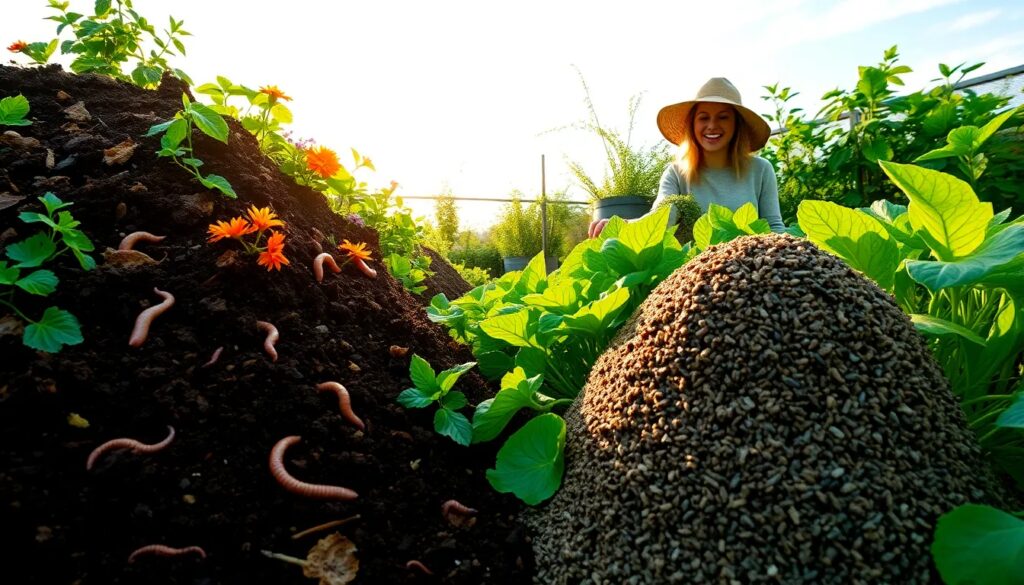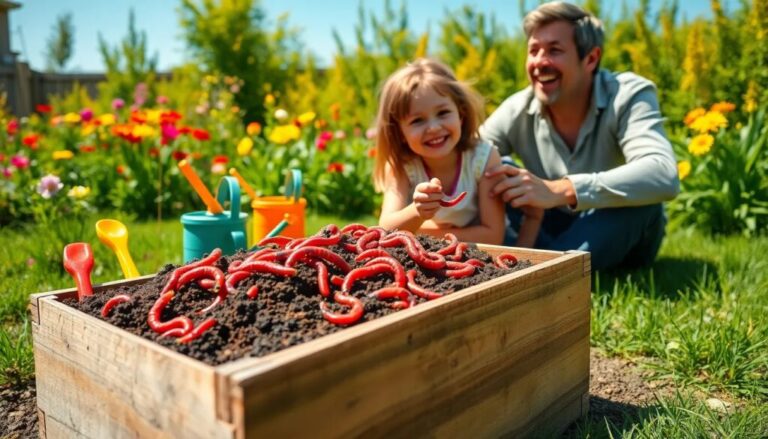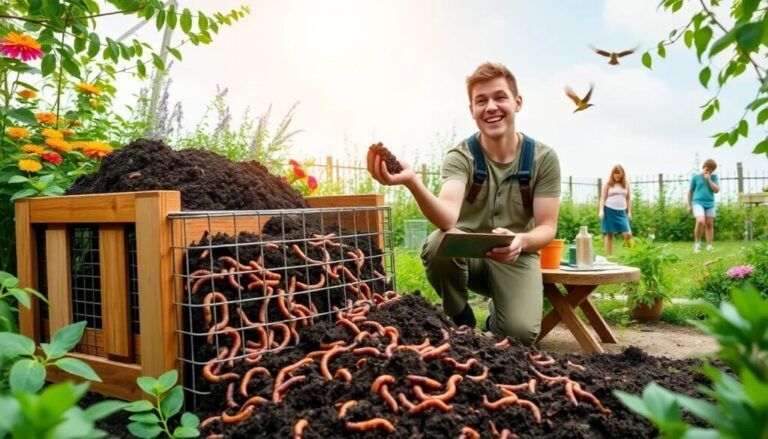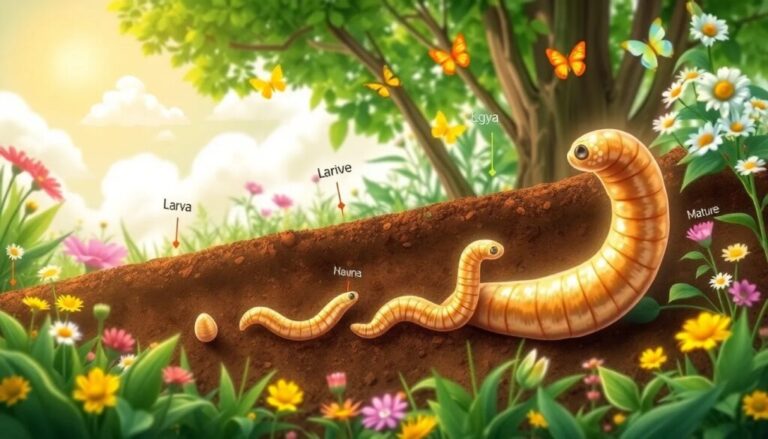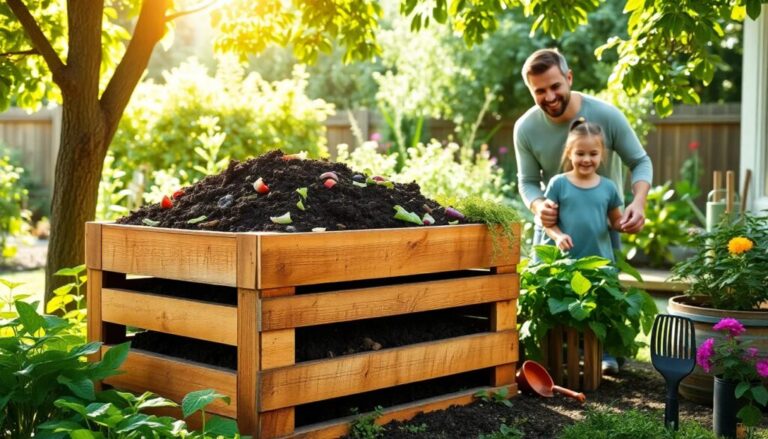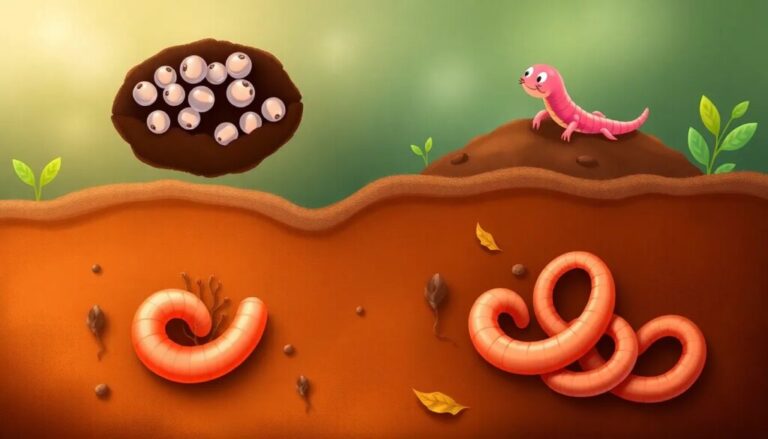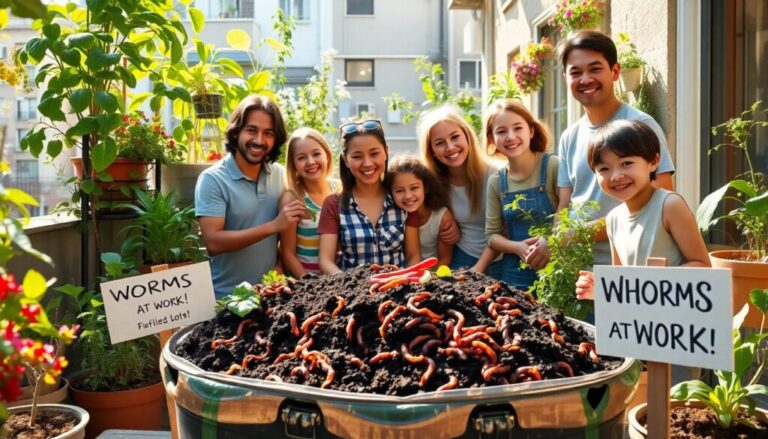Compost vs. Worm Castings – What to Use in Your Garden?
In gardening, choosing between compost and worm castings is essential for optimizing plant growth. Each option offers distinct benefits that can enrich the soil and improve plant health. In this article, we will explore the differences, benefits, and how to use both effectively.
Compost is created from the decomposition of organic matter, while worm castings are the excrement of worms that feed on this matter. Although both are excellent soil amendments, they have unique properties that make them suitable for different situations.
How do compost and worm castings differ?
The differences between compost and worm castings are notable. First, compost is a product of the aerobic decomposition of organic waste, such as fruit scraps, vegetables, and dry leaves. On the other hand, worm castings are the result of the digestive process of worms, which transform organic waste into a highly nutritious fertilizer.
One of the main differences lies in the nutritional profile. Worm castings have a higher concentration of nutrients compared to compost. This means that their use can result in more vigorous plant growth.
- Nutrients: Worm castings contain higher levels of nitrogen, phosphorus, and potassium.
- Beneficial microorganisms: Worm castings harbor a large number of beneficial bacteria that aid in the decomposition and absorption of nutrients.
- Texture: Compost can be coarser and less uniform, while worm castings are fine and easy to apply.
In addition, compost can take longer to break down completely, while worm castings are ready to use in a shorter period of time. Therefore, if you are looking for quick results, worm castings may be the best option.
What are the benefits of using worm castings?
Worm castings offer numerous benefits that make them especially valuable to gardeners. First, they are a natural fertilizer that promotes soil health. Their use increases the nutritional density of the soil, which translates into better plant growth.
Another key benefit is their ability to retain moisture. This is especially important in arid climates or during periods of drought, as it helps keep the soil moist for longer.
- Improves soil structure: Facilitates aeration and water retention.
- Increases disease resistance: The microorganisms present in worm castings help prevent plant diseases.
- Reduces the need for chemical fertilizers: By providing nutrients naturally, dependence on chemicals is reduced.
In addition, worm castings are safe for the environment and do not harm the soil’s microbiota. Using them is an effective way to promote an organic and sustainable garden.
Can I combine compost and worm castings for better results?
Definitely! Combining compost and worm castings can be an excellent strategy for maximizing plant growth. Each of these soil amendments provides different benefits, and combining them can result in a highly nutritious mixture.
By mixing compost with worm castings, you can get the best of both worlds. Compost improves soil structure and adds organic matter, while worm castings enrich the soil with concentrated nutrients and beneficial microorganisms.
- Recommended ratio: A good mix could be 1 part worm castings to 3 parts compost.
- Application: Work this mixture into the soil before planting or as a top dressing during the growing season.
- Long-term results: Over time, this combination can lead to healthier soil and more robust plants.
When using both, be sure to monitor your plants’ needs and adjust the ratio based on their growth and health.
What is vermicomposting and how does it relate to worm castings?
Vermicomposting is the process of breaking down organic matter using worms, which results in the production of worm castings. This method is not only efficient, but also a sustainable way to create fertilizer at home.
Vermicomposting is carried out in specific containers that maintain the right conditions for worms. Organic waste is placed in the container, and the worms feed on it, producing worm castings as they process the material.
- Benefits of vermicomposting: Reduces organic waste and produces high-quality fertilizer.
- Ease of use: It is a relatively simple process and does not require much space.
- Continuous production: You can harvest worm castings on a regular basis, providing you with a constant supply of fertilizer.
In addition, worm castings produced through vermicomposting are especially rich in beneficial microorganisms, making them an excellent resource for any gardener.
How much worm castings should I use in my garden?
The amount of worm castings you should use in your garden depends on several factors, such as the type of plants you are growing and the quality of the existing soil. As a general rule, it is recommended to use between 1 and 2 inches of worm castings on the soil surface or mix them into the substrate when planting.
For best results, consider the following application guidelines:
- Initial mix: When preparing the soil for new plants, incorporate 1 part worm castings for every 3 parts soil.
- Top dressing: During the growing season, apply 1/4 inch of worm castings to the soil surface around the plants.
- Frequency: You can apply worm castings every 4 to 6 weeks to maintain consistent nutrition.
Remember that although worm castings are very beneficial, overuse can affect soil balance, so it is important to follow recommendations and observe your plants’ response.
What are the disadvantages of using compost and worm castings?
Despite their many benefits, both compost and worm castings have some disadvantages. For example, compost production can take time. If you don’t have the patience to wait for it to decompose properly, you may not get the desired results.
In addition, worm castings, although rich in nutrients, can be limited in volume. Depending on the size of your vermicomposting operation, it may not be enough to cover large areas of your garden.
- Cost of worm castings: Buying worm castings instead of producing them can be more expensive.
- Space requirements: You need a suitable place for vermicomposting, which can be challenging in small spaces.
- Specific conditions: Worms require specific conditions to thrive, such as controlled temperature and humidity.
Despite these disadvantages, many gardeners find that the benefits far outweigh the drawbacks, especially when integrated into an organic and sustainable gardening approach.
How to use worm castings in potted plants?
Using worm castings in potted plants is an effective way to provide concentrated nutrients. To maximize their effectiveness, follow these steps:
First, you can mix worm castings into the potting soil before planting. This ensures that the plant’s roots have access to nutrients right from the start.
- Recommended ratio: Mix 1 part worm castings with 2 parts potting soil.
- Regular application: Add a layer of worm castings to the surface of the pot every 4 to 6 weeks as a top dressing.
- Watering: When watering, the nutrients are slowly released, providing a steady supply to the plant.
In addition, worm castings help improve the moisture retention of the substrate, which is crucial for healthy growth of potted plants.

